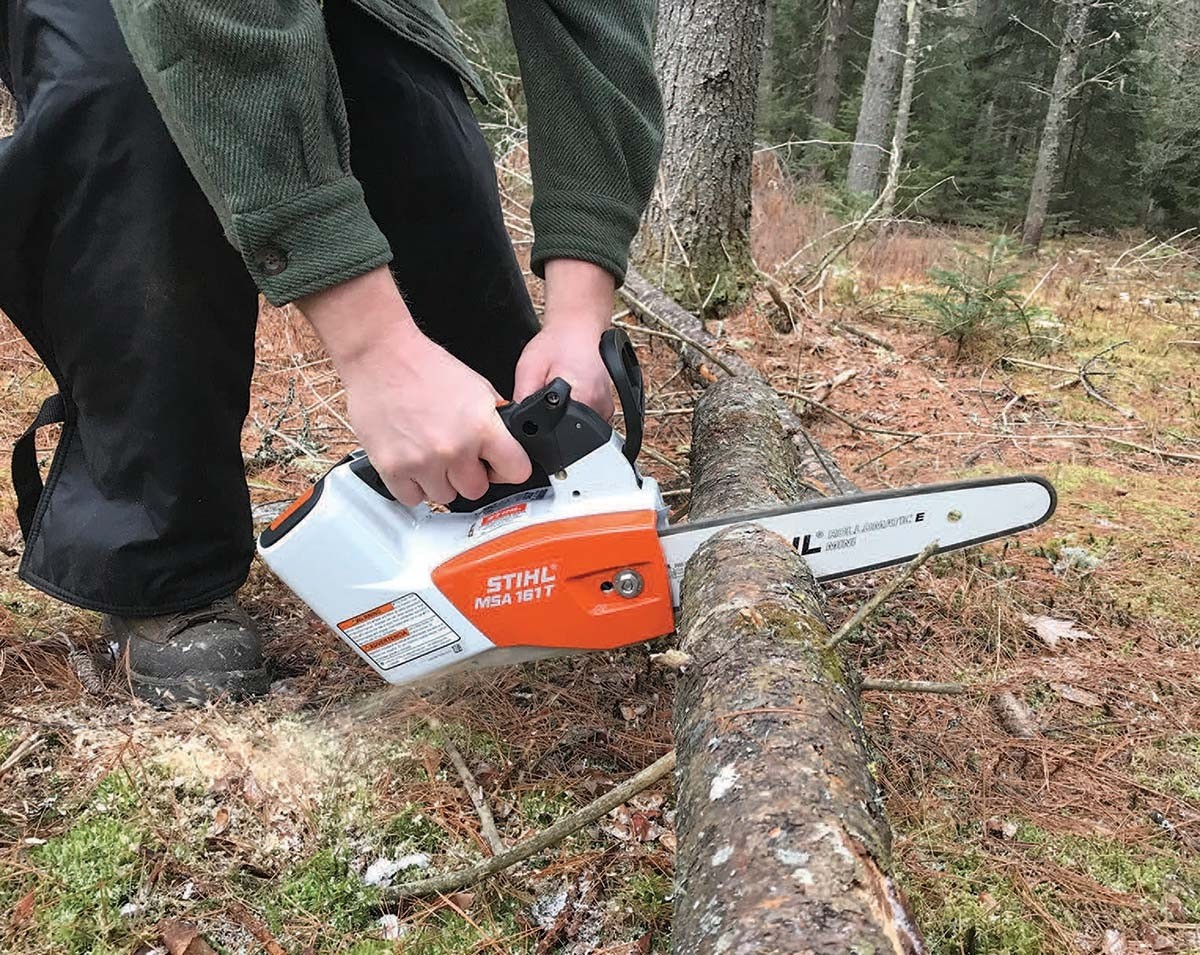
A decade or so ago I had the opportunity to try out some of the early battery-powered electric chainsaws. I wasn’t impressed. They were heavy, underpowered, and had a pitifully short battery life. In short, they felt and performed more like toys than tools.
Recently, a reader asked my opinion of the new battery-powered electric chainsaws, specifically the higher-end saws targeted at more serious saw users. I decided it was time to give these saws a second chance, and subjected a new Stihl MSA 161-T to a bit of torture. This is a top-handle professional arborist saw that carries a professional price tag. Between the powerhead, battery, and charger you’re looking at about $950, or about the same as a Stihl MS 461 or a pair of Husqvarna 455 Rancher gas saws.
Because one of my primary complaints in the past had been short battery life, I opted for a cold Adirondack day, where the mercury topped out at 8 degrees Fahrenheit. I lined up a series of tasks to see how long the lithium ion battery would last under a variety of conditions. The first task was limbing a large white pine marked for removal. To climb and limb the 70-foot tree took a little more than an hour. The MSA 161-T had plenty of power for limbing the largest of branches.
My main complaint is that the saw doesn’t have a standard off/on button; instead, it requires you to use your thumb to engage the battery as you depress the throttle interlock at the same time. This took a bit of getting used to, but became second nature and seems like a nice tradeoff for never having to pull-start a saw (especially while working in a tree).
After the white pine limbing job, I moved to pruning a few large apple trees. The Picco ¼-inch chain is smooth, and made clean cuts that will heal nicely. By this point I had done more than two hours of work with the saw and it still showed 75 percent battery life. As I was pruning the apple trees, I couldn’t help but smell the freshly cut apple wood – a smell that had previously been lost to the two-stroke fragrance of my gas saw.
Another application for battery saws is trail maintenance where lugging mixed fuel may be less than desirable. I spent another three hours removing blowdown along a trail. Most of the cleanup work consisted of cutting 4- to 8-inch balsam fir that littered the trail. By this point I had worked with the saw for more than five hours and still had 25 percent battery life in temperatures that never made it to double-digits. This was impressive for sure, and showed just how far battery technology has come during the last decade. Weight-wise, the battery is almost as heavy as the powerhead, with a total combined weight right around eight pounds, putting it on par with similar gas-powered saws.
While we are still a ways from having full-size, battery-powered felling saws, these smaller saws have served as a platform for transitioning from toy to tool; and as this technology becomes more mainstream, we’ll certainly see prices fall. A replacement battery for the MSA 161-T currently retails for almost $200; for many folks, this is the barrier that will keep them mixing gas and oil...at least for now.


Discussion *